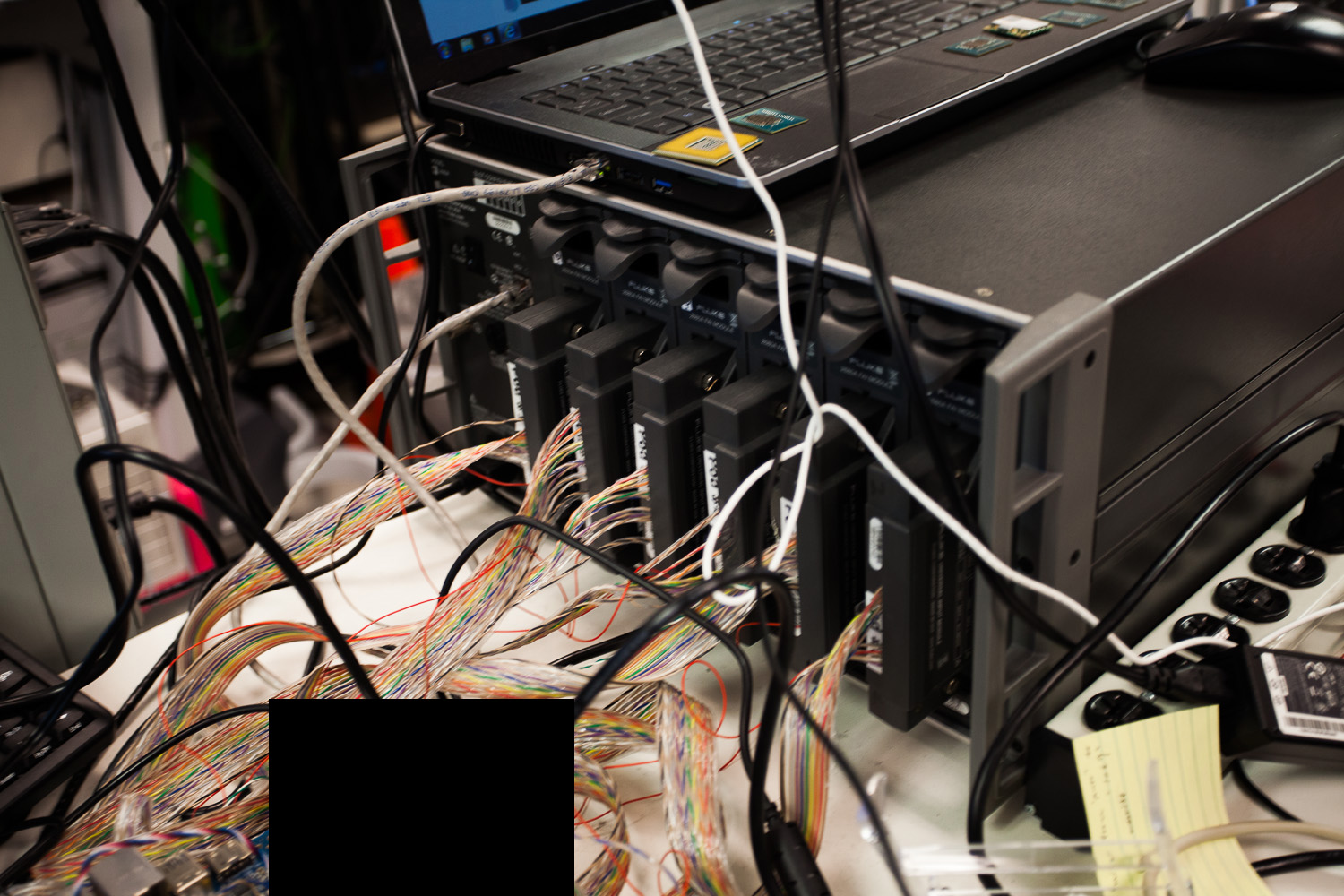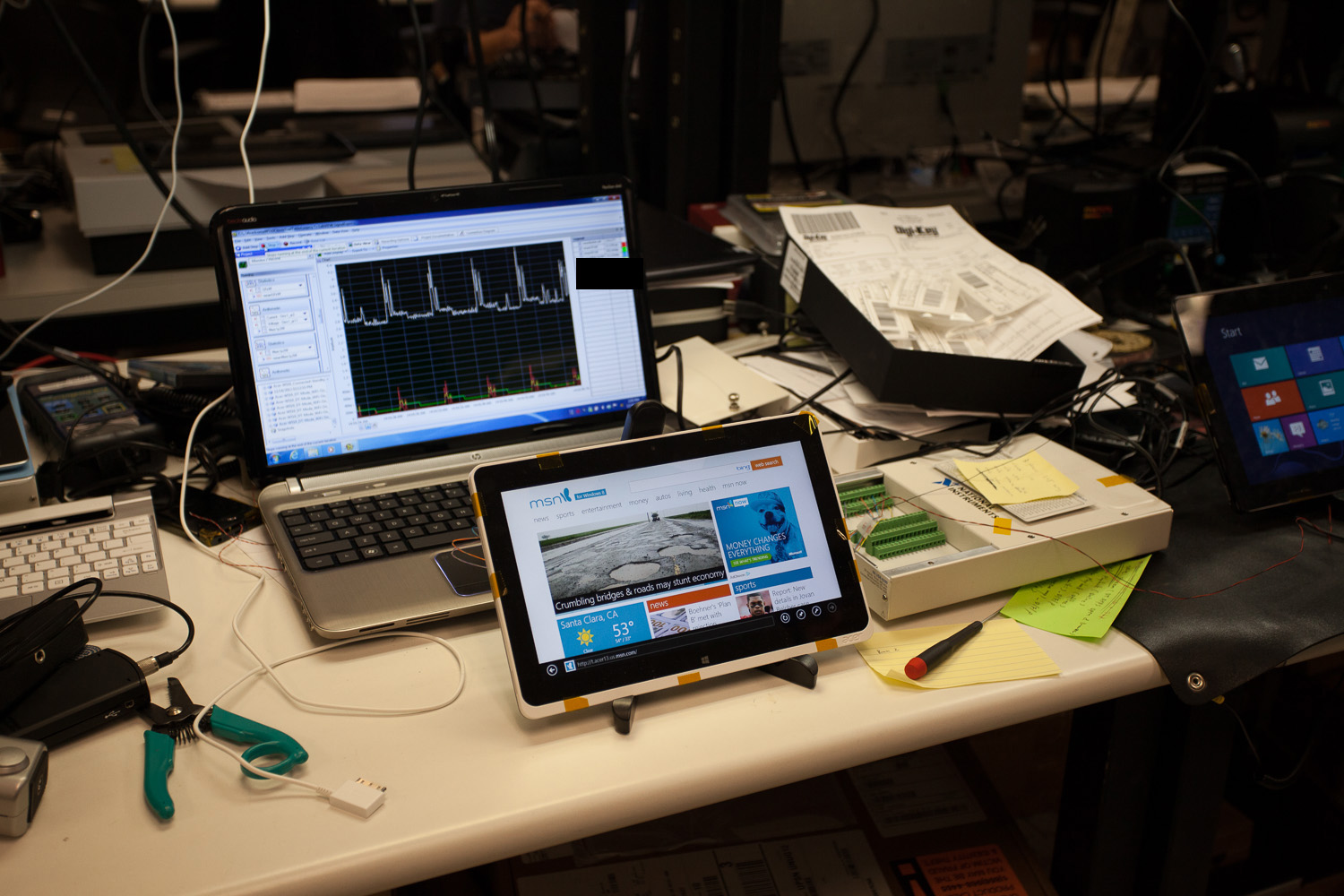ARM Vs. x86: The Secret Behind Intel Atom's Efficiency
Intel recently shared very granular power measurements of its Atom SoC and Nvidia's Tegra 3. If you previously believed ARM's architecture to be inherently more efficient, perhaps you underestimated the benefit of Intel's manufacturing and architecture.
Officiating x86 Vs. ARM Using Hard Data
Although the results we're looking at today are generated at Intel, we were on-site looking at and playing with the company's test equipment as the numbers were being run, observing the results. We’ve also done enough of our own analysis from previously-published reviews to confirm that these numbers make sense. Intel is picking the easiest competitor to beat (Tegra 3 running under Windows RT on a Microsoft Surface), but our own preliminary estimates suggest the 32 nm Atom is going to be roughly equivalent to Qualcomm's 28 nm APQ8060A in the ATIV Tab, and more efficient than the 32 nm Exynos 5 Dual in the Chromebook Series 3 XE303C12.
This past week, we were able to watch as Intel's engineers tore down tablets and identified critical points where microsoldering leads to a fancy version of a Fluke multimeter yields power consumption data for specific SoC and platform subsystems. Intel limited what we were able to photograph, and asked us to leave our camera outside specific rooms. But the tour was fully hands-on, and we were even able to test the power requirements for loading Tom's Hardware's home page. Our own benchmark data, extrapolated, is consistent with Intel's. At idle, Nvidia's Tegra 3 imposes similar draw as the Atom. But as workloads become more demanding, Intel's lead increases.
Is it possible that Intel’s numbers are off due to a calibration error? Sure, it’s possible. Scientists thought they had discovered particles traveling faster than light due to a calibration error. With that said, our back-of-the-envelope calculations using the Wh capacity of each device's battery compared to battery life and solving for wattage show that the numbers are believable.
Putting it All Together
The claim that x86 ISA suffers an inherent efficiency disadvantage to ARM does not hold true when you break down the power consumption of currently-available platforms sporting both architectures. They finish neck and neck in most cases. And, when it comes to Microsoft's Surface compared to Acer's W510, the Atom-powered tablet consistently edges out Nvidia's Tegra 3.
In general, our analysis suggests that the ARM-based CPU core is excellent at doing nothing, but starts to require considerably more power during computationally-intensive workloads. Even at idle, though, the Acer W510 uses less power than Microsoft's Surface. In this scenario, the CPU cores aren't cranking away, but the graphics core is still refreshing the screen and reading from memory. This constant reading taxes the memory controller, and is one reason why the Atom maintains low power consumption. Under heavier loads, we saw the Tegra 3 take a double hit as CPU power use ramped up quickly, along with the memory controller's draw.
Even though manufacturing technology is one of Intel's obvious strengths, the efficiency of its memory controller also becomes quite apparent in the company's power measurements. Intel and AMD have both pointed out the challenges facing ARM as it moves to 64-bit out-of-order execution, since both companies took years to refine and perfect their own implementations. Memory control is just another one of those areas Intel and AMD dedicate a lot of R&D to optimizing. Need further proof? Our calculations (and conversations with multiple engineers from multiple companies, who we cannot name) suggest that Apple's CPU designs also host efficient memory controllers. Jim Keller was at Apple during the development of the A4, A5, and A6 SoCs, and was also a key player during the development of AMD’s Athlon 64 and its own integrated memory controller.
Get Tom's Hardware's best news and in-depth reviews, straight to your inbox.
The secret of Atom’s power efficiency is simple. The CPU's handicap at idle is overcome under load, when work is actually being performed, and by a more efficient memory subsystem that is always active. Although Intel continues to use branding many enthusiasts associate with underpowered computing and graphics in cheap netbooks, the Z2760 is a different chip than the N450 so many of us remember.
We know that benchmarks run by Intel's engineers are bound to come under heavy scrutiny. But as we get our hands on more Atom-powered Windows 8-based tablets, we're able to run our own performance and power numbers on them. Intel's granular measurements are helping us put our workloads into context and better-explain the numbers we see in the real world.
If anything, comparing our results to Intel's makes it more clear how much misinformation is getting thrown around the mobile industry. Before we had actual Atom-based hardware running in our labs, it was easy to accept that ARM was more efficient than x86. The Cortex-A9 core is slower than Atom, so it should be more efficient. Then, when we started seeing the -A15's performance numbers and how much faster that architecture is, x86 appeared to be doomed. But nobody really stopped to ask whether -A15's power consumption was still as good, nor had they sat down to run the numbers. Once we started looking at battery life for a given capacity, we began to think about power use in terms of actual watts consumed during a particular task.
I encourage you to do to the same arithmetic we just did when it comes time to comparing platforms. In the meantime, seeing how Intel does its power consumption measurements by soldering wires under a stereo microscope has given me an idea.
No, Tom’s Hardware isn’t going to need a surgical robot capable of making a paper airplane smaller than a penny to help us with the microsoldering. Rather, we have our own spine surgeon capable of making a paper airplane smaller than a dime on staff to help out.
Current page: Officiating x86 Vs. ARM Using Hard Data
Prev Page Windows 8 Gestures: Latency And Power Consumption-
Novuake Excellent! Was wondering about this for some time. Also made the mistake of thinking Intel was behind in the mobile space... Well done Toms.Reply -
tipoo I'll be very interested to read the Cortex A15 follow up. From what I gather, if compared on the same lithography the A15 core is much larger than the A9, which likely means more power, all else being equal. It brings performance up to and sometimes over the prior generation Atom, but I wonder what power requirement sacrifices were made, if any.Reply
I'm thinking in the coming years, Intel vs ARM will become a more interesting battle than Intel vs AMD. -
AlanDang @tipoo, we're not going to hang our hat on it just yet (until we run the numbers ourselves), but A15 runs hot, which is what we hint at in our article.Reply -
blubbey tipoo I'm thinking in the coming years, Intel vs ARM will become a more interesting battle than Intel vs AMD.Reply
I was until I saw the numbers. Intel spent $8.4 billion in 2011 ($6.6 billion in 2010 and $5.7 billion in 2009) on R&D - http://www.intc.com/intelAR2011/business/research/ - while ARM isn't worth $1b. It may take a few years but Intel are seriously massive, they'll soon be the go to guys for mobile. Plus (according to rumours) with Haswell focusing on power saving, it could be a big leap forward. -
tipoo AlanDang@tipoo, we're not going to hang our hat on it just yet (until we run the numbers ourselves), but A15 runs hot, which is what we hint at in our article.Reply
I'm guessing the same thing. So far we've only seen it in a tablet (Nexus 10), and even that with its 10 inch tablet sized battery didn't last particularly long. ARM has the distribution advantage right now, but I think once Intel gets its foot in the door it will be the 900lb gorilla in this market as well. -
ARM isn't just ARM holdings, it's nVidia, Samsung, and Qualcomm just to name a few of the heavy hitters. And it should also be noted that even if your SoC is better, if the OEM integrating it is incompetent, it won't matter. I'm certain more Surface RT devices have been sold compared to the Acer W500 because it had better availability, a stronger marketing campaign, and overall is a far more solid device. Don't miss the forest for the trees.Reply
-
tipoo blubbeyI was until I saw the numbers. Intel spent $8.4 billion in 2011 ($6.6 billion in 2010 and $5.7 billion in 2009) on R&D - http://www.intc.com/intelAR2011/business/research/ - while ARM isn't worth $1b. It may take a few years but Intel are seriously massive, they'll soon be the go to guys for mobile. Plus (according to rumours) with Haswell focusing on power saving, it could be a big leap forward.Reply
Didn't Qualcomm alone overtake AMD as a chipmaker? The thing about ARM is that anyone can get a licence for the ISA and build a custom core around it, like Krait.
-
AlanDang And the Chromebook with an A15. We're looking at several other SoC's but what's empowering is how simple math can help you look at efficiency.Reply
But it's Christmas Eve, and sometimes there are more important things than running benchmarks and soldering wires to SoCs. ;) -
richarduk Measurements taken when running Windows. Arm and Intel chips both require different coding styles to make them preform. The way windows has been coded favours the Intel Arch. Intel chips like to lean heavy on their cache, Arm chips prefer code to do as much processing on it's data as it can using all it's registers before moving on.Reply
Bit like comparing a 4x4 and a sports car in a muddy field.

